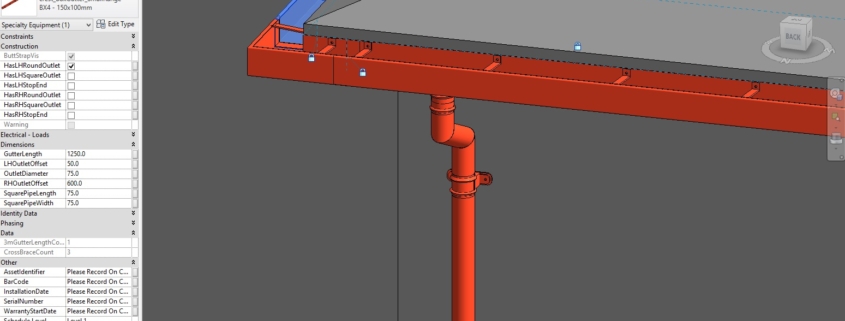Guttercrest BIM ready
Leading UK manufacturer and supplier of aluminium rainwater goods Guttercrest are BIM-ready after months of work by the in-house design team.
The project has been 18 months in the making and the firm are delighted to finally launch a selection of their gutters and downpipes onto UK BIM object library, bimstore.co.uk. The firm will continue to add to the store, until all of their product ranges and styles are available.
Guttercrest manufacture over 40 different standard types of aluminium gutters, downpipes, fascia, soffits and wall copings.
Each file package includes compressive information on the product, designed for use with Autodesk Revit 2017.
BIM (Building Information Modelling) hit construction industry headlines last year after the Government’s mandate that all public sector projects need to utilise the BIM approach. The practice involves the creation of a single digital model that everyone can access and work from – architect, client, supplier and builder. The ‘3D only’ approach to designing buildings has the aim of eliminating waste, improving lead times, and productivity. By simulating the build, processes can be streamlined and mistakes eliminated.
Any organisation working on public-funded projects needs to be ‘BIM enabled’ at level 2.
The BIM approach to building secures the after-life of the product and will replace the operations and maintenance manual – improving traceability of replacement products.
The BIM approach supports Guttercrest’s philosophy – which is based on their roots as installers – thinking as an installer and not just a manufacturer. This is reflected in the design, technical and production teams who expertly guide clients through the specification process.
Gary Power, Director at Guttercrest explained: “Although complex, the regulations for BIM are here and we intend to work with them to improve working practices and simplify the design process for architects. We strive to make our BIM objects as a true of a representation as possible to the real thing. I predict a growth in demand for BIM from all industries as contractors increasingly see the potential cost and time savings in their construction projects. ”

